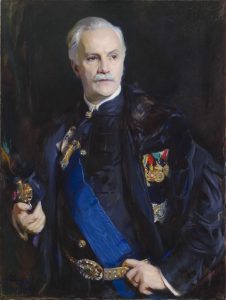Coming home
The British Ambassador's Residence in Budapest was built in 1925, originally as the home of Hanna Hódosi and her husband Tibor Scitovszky. Their portraits, painted by Philip de Laszlo, used to once hang in their elegant neo-baroque villa. They now symbolise a link between two nations, across cultures and histories.
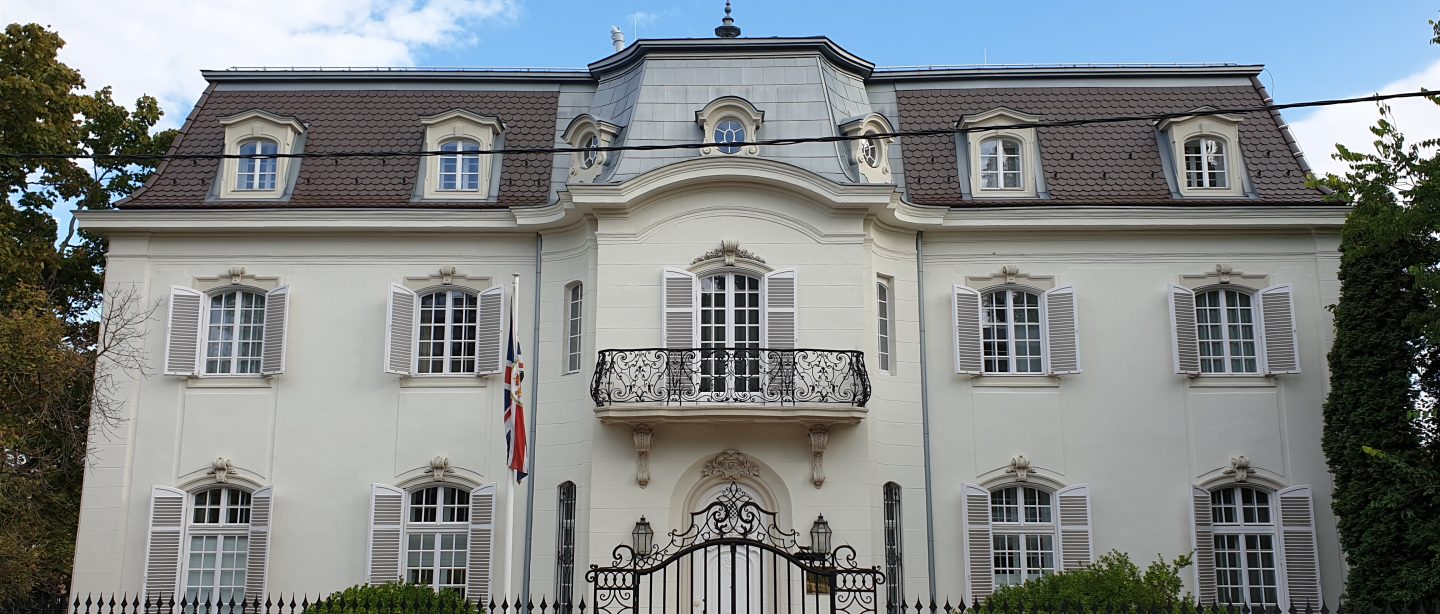
Exterior of the British Ambassador's Residence, Budapest © Crown Copyright
Meet Tibor and Hanna
Tibor was born in Nőtincs in the county of Nógrád on 21 June 1875. He was the son of Eugénia Szitányi de Szitány (1850-1934) and János de Scitovszky (1850-1903), Vice Lord Lieutenant of Nógrád and a Member of Parliament.

This footage of Tibor from 1924 [click image to view] shows how well his likeness was captured in de Laszlo’s portrait of him, which you can view further down.
As undersecretary in the Ministry of Commerce, he served as an economic advisor to the Hungarian delegation at the peace negotiations at Trianon that followed the First World War. He was Minister of Foreign Affairs from November 1924 to March 1925, in the government of Count István Bethlen. He then became president of the Magyar Általános Hitelbnk [Hungarian General Bank of Credit], and in 1927 entered the Upper House of Parliament.
He married Hanna Hódosi (1886-1977) and they had a son, also named Tibor (1910-2002) who emigrated to the United States, becoming a celebrated economist and professor at Stanford and Berkeley.
The Scitovszky villa in the 1930s
Travelling back in time, let’s imagine a visitor to the Scitovszky villa climbing up the magnificent spiralled staircase and stepping into the atmospheric Salon. Here, they would have been invited to take a seat on the French furniture chosen with great taste and refinement by Madam Scitovszky.
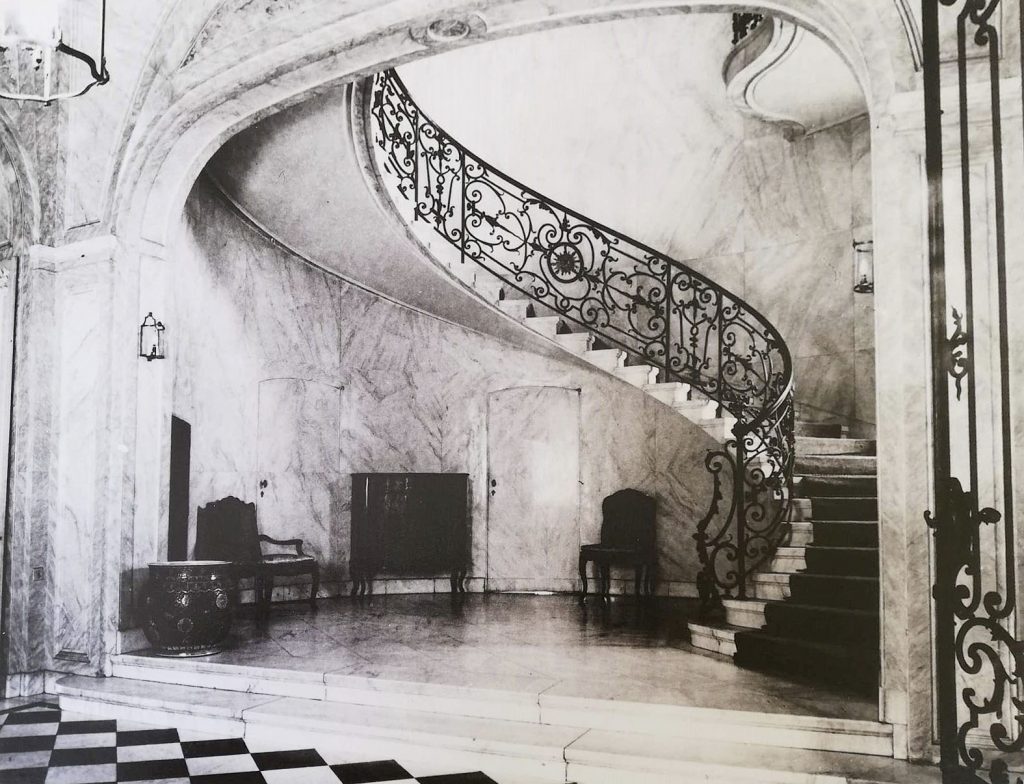
The magnificent spiralled staircase 1925 © All rights reserved
One of the most sought-after portrait painters in Europe at the time, the Hungarian-born Philip Alexius Laszlo and his wife, Lucy Guinsess, were regular guests of the Scitovszkys. On one occasion in 1935, de Laszlo recounted:
We dinner [sic] with the Scitovszky’s in their splendid house with the very best taste – of which I saw none equally beautiful – from every point of view perfect in style & only very good thinks [sic] in it – was pleased to see my two fine portraits of them painted some 8 years ago in Paris.
The pendant portraits mentioned by de Laszlo were made by the artist 1927 and displayed with great pride in the Scitovszky villa. This commission conferred the sitters’ high status and aligned them with the Hungarian aristocracy who frequently called upon de Laszlo to portray them. Renowned for their elegance, naturalism and fluid brushwork, de Laszlo’s portraits often depicted European monarchs and politicians.

Portrait of Tibor de Scitovszky in situ at the family villa in Budapest 1930s © All rights reserved
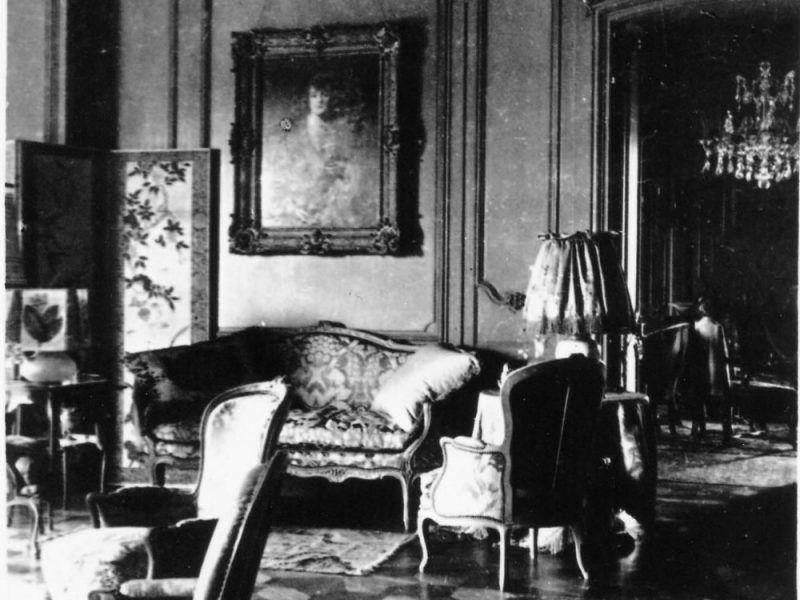
Portrait of Hanna de Scitovszky in situ at the family villa in Budapest 1930s © All rights reserved
The portraits
Tibor and Hanna lived in their villa until 1946 when they left for the United States, leasing the building to the British Government for use as the Residence of the British Ambassador. It was expropriated by the Hungarian State after the family decided to remain in America. The British Government continued to lease it, ultimately purchasing it in 1964. But what happened to the two paintings by de Laszlo? A note in the Residence archive written by one of Tibor Scitovszky’s daughters gives us a clue:
Mother left them to me when she died; but since they were too big to display in our modest house with its low ceiling and too beautiful to stack away in the attic, I donated them to the Hungarian Benedictine monks’ nearby boarding school, whose then director was my parents’ old friend, who often visited them and officiated at both their funerals.The paintings were hung in the school’s library, which seemed a suitable place to display them and where, I had hoped, they would stay.
However, the paintings did not remain at Woodside Priory School. They were sold at a Sotheby’s auction in 1993, much to Scitovszky’s daughter’s dismay, when the school was struggling with financial difficulties.

Madame Tibor de Scitovszky, née Hanna Hódosi by Philip Alexius de László, oil painting © image: Crown Copyright
Would the elegant portraits ever emerge from private ownership? For the next twenty-six years, the charming portrait of Hanna veiled in her extraordinary, translucent shawl and that of her husband adorned with decorations such as the blue sash, the badge of the Finnish Order of the White Rose, the Imperial Order of the Iron Crown, the Knight’s Cross of the Imperial Order of Franz Joseph, the Hungarian Bronze Medal of Merit with the Holy Crown and the Jubilee Medal for civilians, would remain in an anonymous private collection.
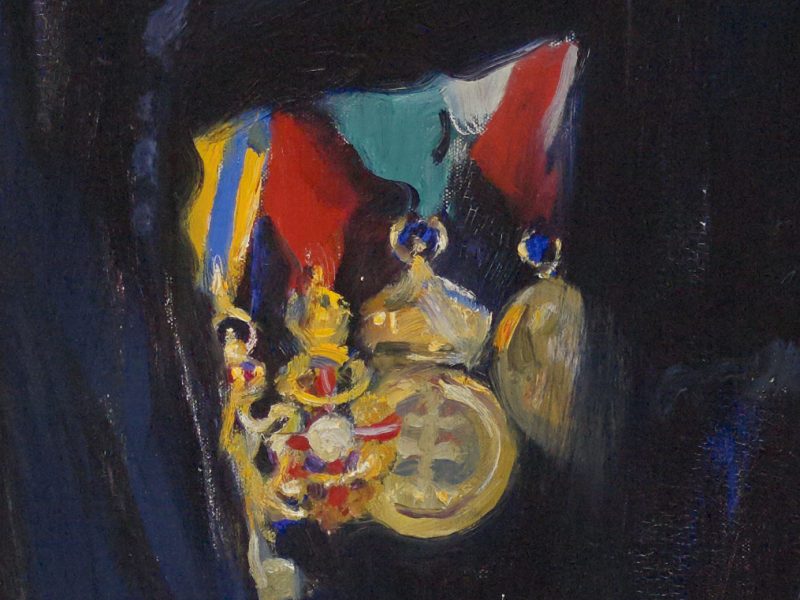
detail from de Laszlo's portrait of Tibor Scitovszky © image: Crown Copyright

detail from de Laszlo's portrait of Tibor Scitovszky © image: Crown Copyright
From New York to London
In March 2019, the founder of The De Laszlo Archive Trust, Sandra de Laszlo, alerted the Collection to a Christie’s auction in New York which featured the two paintings. Our bid was successful and we were delighted to acquire the works with a view to returning the portraits to their original home in Budapest. But not before a short visit to de Laszlo’s home since 1907: London. Here, the paintings were examined by a conservator who found them in excellent condition and in their original frames, possibly chosen or designed by De Laszlo himself. After some structural work and glazing with museum glass for protection, the paintings were ready for their journey home: Budapest.
Coming Home
The paintings were installed in the Residence to great acclaim in September 2019, echoing the original display from the 1930s. The event was planned to coincide with the opening at the Hungarian National Gallery of the first retrospective of De Laszlo’s work in his country of birth: ‘Philip Alexius de Laszlo (1869-1937): I am an artist of this world’, marking the 150th anniversary of the artist’s birthday. Such findings are rare and suggest that among the Government Art Collection’s almost 400 locations, there is always a perfect place for a work of art. After such a long journey across space and time, the Scitovszky portraits by De Laszlo have finally returned home, setting a tone for the cultural and diplomatic relationship between the UK and Hungary.
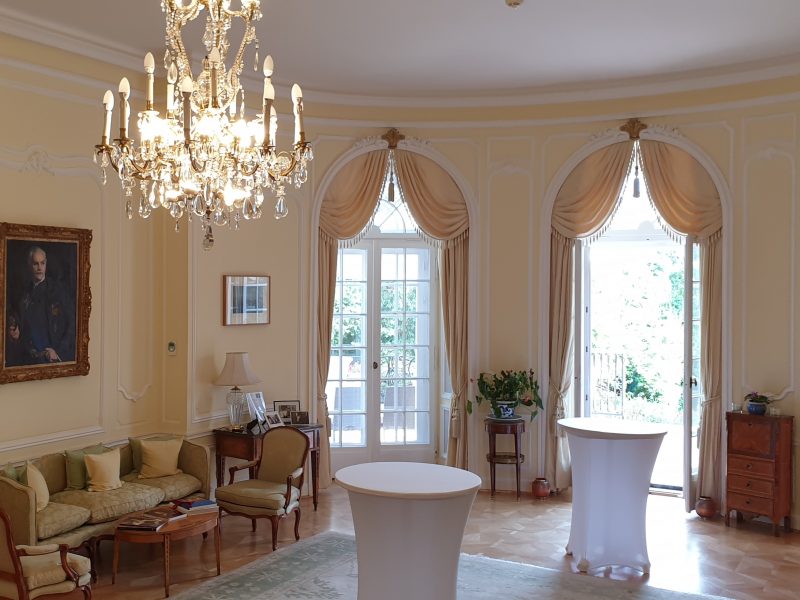
Tibor de Scitovszky's portrait installed in the Budapest Residence 2019 © Crown Copyright
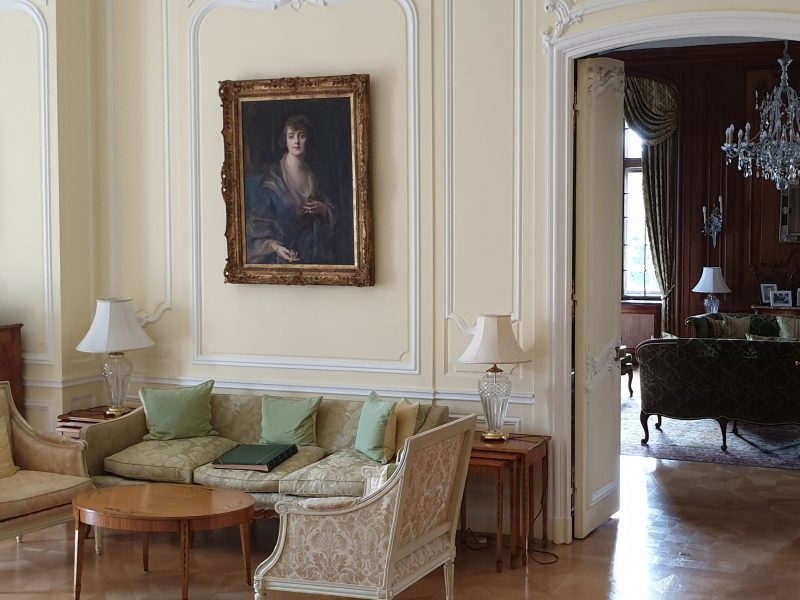
Hanna de Scitovszky's portrait installed in the Budapest Residence 2019 © Crown Copyright

The Scitovszky family crest on the lintel © Crown Copyright
Written by Dr Laura Popoviciu, Curator (Historical)
We are grateful to Sandra de Laszlo for alerting us to the Christie’s sale, the Foreign and Commonwealth Office for contributing towards the purchase of the paintings, British Ambassador Iain Lindsay and Dr Katherine Field from the De László Archive Trust for information and archival material on the two paintings.
